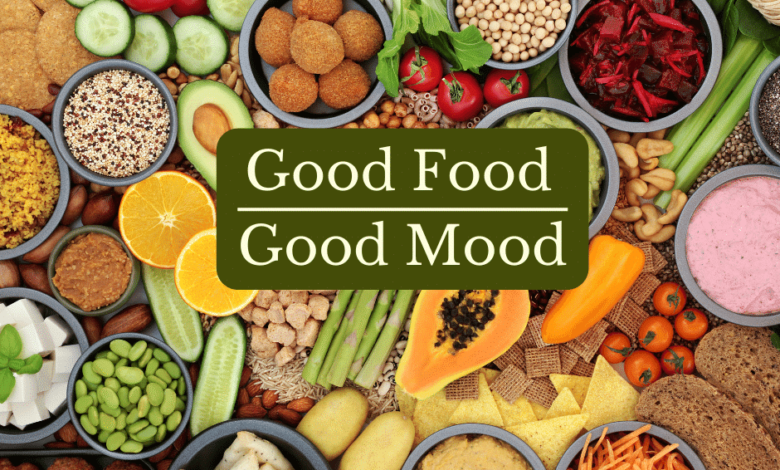Best Foods to Boost Happiness After 50 – New UK Study Reveals the Secret to Joyful Aging

Introduction: Happiness and Aging Gracefully
Turning 50 is often described as a milestone—a mix of reflection and renewal. It’s a stage where many people begin prioritizing health, energy, and emotional well-being more than ever. Interestingly, researchers in the UK recently discovered that what we eat can significantly influence our happiness levels after 50.
While most conversations around aging tend to focus on exercise routines, medical check-ups, or supplements, food plays a surprisingly powerful role in mental and emotional wellness. If you’ve been wondering how to boost happiness after 50, you may not need to look further than your plate.
This article explores the findings of the new UK study, highlights specific foods proven to nurture joy, and provides practical tips to incorporate them into daily life.
Why Food Influences Happiness After 50
After 50, the body undergoes natural changes: metabolism slows, nutrient absorption becomes less efficient, and hormone levels shift. These physical transitions don’t just affect physical health—they also impact mood, cognitive function, and emotional resilience.
The UK study emphasized that diet has a direct influence on serotonin (the “feel-good” hormone), dopamine (linked to motivation), and gut health (often called the “second brain”). Simply put: the right foods can boost happiness after 50 by supporting brain chemistry, balancing hormones, and reducing inflammation—all while fueling energy for an active lifestyle.
The Top Foods to Boost Happiness After 50
1. Fatty Fish: Salmon, Mackerel, and Sardines
Fatty fish are rich in omega-3 fatty acids, which are linked to improved brain health and reduced risk of depression. As the study highlighted, individuals over 50 who regularly ate fatty fish reported better mood stability and overall life satisfaction.
How to add it to your diet:
- Grill salmon with herbs for dinner.
- Add sardines to a salad for a quick, nutrient-rich lunch.
- Try mackerel pâté on whole-grain toast.
2. Leafy Greens: Spinach, Kale, and Swiss Chard
Dark leafy greens are packed with folate, a B-vitamin essential for brain function and serotonin production. Folate deficiency is often linked to fatigue and low mood, which makes greens a happiness essential.
Easy ways to include them:
- Blend spinach into a morning smoothie.
- Toss kale with olive oil for a quick sautéed side dish.
- Mix chard into soups or omelets.
3. Berries: Blueberries, Strawberries, and Blackberries
Berries are high in antioxidants and flavonoids, which help reduce oxidative stress—a common factor in age-related mood decline. The study found that people over 50 who consumed berries at least three times a week reported higher mental clarity and joy.
Simple swaps:
- Top yogurt with fresh blueberries.
- Add strawberries to oatmeal.
- Snack on blackberries instead of processed sweets.
4. Fermented Foods: Yogurt, Kefir, and Sauerkraut
Gut health plays a massive role in emotional well-being. Probiotics from fermented foods promote a healthy microbiome, which the UK study found was strongly associated with lower rates of anxiety and depression in older adults.
Tasty ideas:
- Start the day with kefir and fruit.
- Add sauerkraut as a side with meals.
- Choose plain yogurt and sweeten naturally with honey.
5. Nuts and Seeds: Walnuts, Almonds, Flaxseeds, and Chia Seeds
Nuts and seeds are nutrient powerhouses rich in magnesium, zinc, and omega-3s. Magnesium, in particular, is known as the “relaxation mineral,” helping reduce stress and support sleep quality.
How to enjoy them:
- Sprinkle flaxseeds into cereal.
- Snack on a small handful of almonds.
- Blend chia seeds into smoothies for extra texture.
6. Dark Chocolate (in Moderation)
Yes, chocolate made the list—but specifically dark chocolate with at least 70% cocoa. It contains flavonoids and compounds that increase endorphin levels and improve blood flow to the brain. The study revealed that participants who indulged responsibly felt more upbeat.
Tip: Limit to a small square or two per day to enjoy the benefits without excess sugar.
7. Whole Grains: Oats, Quinoa, and Brown Rice
Whole grains help regulate blood sugar, providing steady energy instead of mood-crashing spikes. They also contain B vitamins that are crucial for brain health.
Simple changes:
- Switch white rice for brown rice.
- Use quinoa as a base for salads.
- Enjoy oatmeal topped with berries for a morning mood boost.
8. Green Tea
Green tea contains L-theanine, an amino acid that promotes calmness without drowsiness. Combined with a gentle dose of caffeine, it improves focus and relaxation. Participants in the study reported lower stress levels when consuming green tea regularly.
Practical Tips to Boost Happiness After 50 Through Food
- Plan meals mindfully: Try building meals that combine protein, fiber, and healthy fats for balanced energy.
- Stay hydrated: Dehydration can mimic feelings of fatigue or low mood.
- Practice moderation: Enjoy treats like dark chocolate or wine in small amounts.
- Cook at home often: This not only ensures healthier choices but also makes eating an enjoyable ritual.
- Listen to your body: Notice which foods make you feel energized and which leave you sluggish.
Beyond Food: A Holistic Approach to Happiness
While diet is central, happiness after 50 isn’t only about what you eat. The UK study emphasized the synergy between nutrition, lifestyle, and mindset. For the best results:
- Stay active: Regular movement supports both physical and mental health.
- Social connections: Sharing meals with loved ones enhances joy.
- Rest and sleep: Good food and good sleep work hand in hand.
- Purpose-driven living: Pursuing hobbies, volunteering, or learning new skills adds meaning to life.
Conclusion: Eating Your Way to Joyful Aging
The UK study makes one thing clear: happiness after 50 is not a mysterious secret—it’s something you can nurture daily, and your diet is one of the most powerful tools you have. From omega-3-rich fish to antioxidant-packed berries, choosing foods that boost happiness after 50 can help you feel more energized, mentally sharp, and emotionally resilient.
Aging gracefully isn’t about restriction or giving up the pleasures of food. It’s about embracing the right ingredients that fuel both body and spirit. With every meal, you have the chance to not just nourish your health, but also cultivate joy.
So the next time you’re planning your grocery list, remember: you’re not just shopping for dinner—you’re shopping for happiness.


